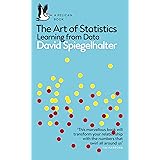Reinforcement Learning in Machine Learning
Machine learning includes the field of reinforcement learning. It’s all about taking the right steps to maximize your reward in a given situation.
It is used by a variety of software and computers to determine the best feasible action or path in a given situation.
Reinforcement learning differs from supervised learning in that supervised learning includes the answer key, allowing the model to be trained with the correct answer, whereas reinforcement learning does not include an answer and instead relies on the reinforcement agent to decide what to do to complete the task.
It is obligated to learn from its experience in the absence of a training dataset.
Reinforcement Learning in Machine Learning
Let’s have a look at an example. We have an agent and a prize, but there are a lot of roadblocks along the way. The agent’s job is to find the most efficient route to the reward.
The difficulty is better explained in the following picture.

The robot, diamond, and fire are depicted in the illustration above. The robot’s purpose is to obtain the diamond reward while avoiding the obstacles that are thrown in his way.
The robot learns by attempting all feasible courses and then selecting the one that provides the best reward with the fewest obstacles.
Each correct step will reward the robot, while each incorrect step will deduct the robot’s payout. When you approach the final prize, the diamond, the entire reward will be computed.
The most important aspects of reinforcement learning –
Best SQL Courses Online-Free Course List » finnstats
Input:– The input should be a starting state for the model to work from.
Outputs:-There are numerous possible outputs, just as there are numerous solutions to a given problem.
Training:- The model will return a state based on the input, and the user will decide whether to reward or punish the model based on its output.
The model is always evolving.
The optimal solution is determined by the highest possible payment.
Difference between Reinforcement and Supervised Learning?
RL: The goal of reinforcement learning is to make judgments in a sequential manner. In simple terms, the output is determined by the current input’s state, and the next input is determined by the previous input’s output.
SL: The choice is decided on the initial input or the input given at the start in supervised learning.
RL: Because decisions in reinforcement learning are dependent, we assign labels to sequences of dependent decisions.
How to Calculate Mean Absolute Percentage Error (MAPE) in R » finnstats
Reinforcement example is chess game and supervised learning example is object recognition
Reinforcement can be divided into two categories: positive reinforcement and negative reinforcement.
Positive
When an event occurs as a result of a particular behavior, reinforcement increases the strength and frequency of the behavior. To put it another way, it has a beneficial influence on conduct.
The following are some of the benefits of reinforcement learning:
Enhances Performance
Change can be sustained for a long time.
Too much reinforcement might result in an overabundance of states, lowering the quality of the output.
Negative
Negative Reinforcement is when a behavior is strengthened as a result of a negative circumstance being avoided or halted.
The following are some of the benefits of reinforcement learning:
Enhances Behaviour
Show your contempt for a basic level of performance.
It only gives enough to meet the bare minimum of requirements.
Systematic Sampling in R with example » finnstats
Applications
Reinforcement Learning in a variety of applications,
Robotics and industrial automation can both benefit from RL.
Machine learning and data processing can both benefit from RL.
RL can be used to construct training systems that deliver students customized instruction and materials based on their needs.
Conclusion
One of the most fascinating and effective aspects of machine learning is reinforcement learning. In real life, the agent investigates the surroundings without the need for human interaction.
It is the most widely used learning algorithm in Artificial Intelligence. However, there are some situations in which it should not be utilized, such as when there is sufficient data to answer the problem and other machine learning techniques may be employed more efficiently.
The fundamental problem with the RL algorithm is that certain settings, such as delayed feedback, might alter the learning speed.





